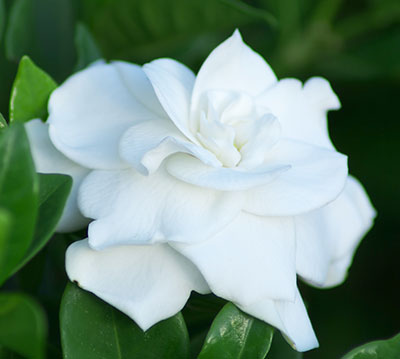May Tips & Tricks for South Florida Landscapes “Gardenia, plant of the month”
Gardenias
 Gardenias may not be low-maintenance plants, but many Southern gardeners think they’re worth the effort. And now there are hardier varieties available that better withstand typical gardenia problems like sooty mold.
Gardenias may not be low-maintenance plants, but many Southern gardeners think they’re worth the effort. And now there are hardier varieties available that better withstand typical gardenia problems like sooty mold.
Gardenias are evergreen shrubs that grow in height from 2-15 feet (depending on the cultivar), forming mounds of glossy, dark-green foliage. Leaves are oval shaped, and flowers vary in color—from pale yellow with purple mottling to creamy white.
Probably the most distinguishing characteristic of the gardenia is its sweet scent. All gardenia blossoms possess a wax-like appearance and can be either single or double, depending on the cultivar.
There are over 200 species of gardenias. In Florida, varieties of Gardenia jasminoides are used almost exclusively. Many cultivars are available and there is considerable variation in form, flower type, and plant size. Because of this, gardenias can be used as specimen plantings, hedges, or even as groundcovers.
Planting and Care
Gardenias will do best in well-drained, rich soil, so consider amending your chosen planting site with compost or peat moss. Soil pH is important for gardenias, and should be between 5.0 and 6.5. Where soil pH is above 7.0 (usually due to naturally occurring limestone or sea shells), consider an alternative plant or try growing your gardenia in a container.
Plant your gardenia in full sun or partial shade, with enough space for good air circulation—this helps with pest prevention and allows for the flowers’ scent to spread. Plant near a walkway, entry, or patio so you’ll have the opportunity to enjoy its fragrance.
For ideal flower production, water your gardenia regularly and fertilizer two or three times a year. One application is normally scheduled around February (South Florida) or March (North Florida) and another in September (North Florida) or October (South Florida). A third fertilizer application may be made during the summer.
Pruning should only be done after the shrub has stopped flowering, and before October. Pruning after then will hurt the next season’s flower production.
The most common problem encountered with growing gardenias is pests. Mealybugs, aphids, scales and whiteflies are all problematic on gardenias. Try using insecticidal soaps or horticultural oils; these can usually keep pests in check when used properly. Root-knot nematodes can also be a problem, but there are currently no chemical treatments available. There are special, grafted gardenias resistant to root-knot nematodes available for Central and South Florida, but they are too cold-tender for North Florida.
If you need help regarding your landscaping, we at Garden Services are fully licensed & insured to handle all your irrigation, landscaping, lawn maintenance and tree service needs whether it’s a residential, commercial landscaping or homeowner association property. If you ever have any comments or questions, please don’t hesitate to call or email me and I’ll be happy to answer any questions that you might have. Special thanks to UF/IFAS extension for some helpful information provided in this post. Until next month Happy Gardening!
